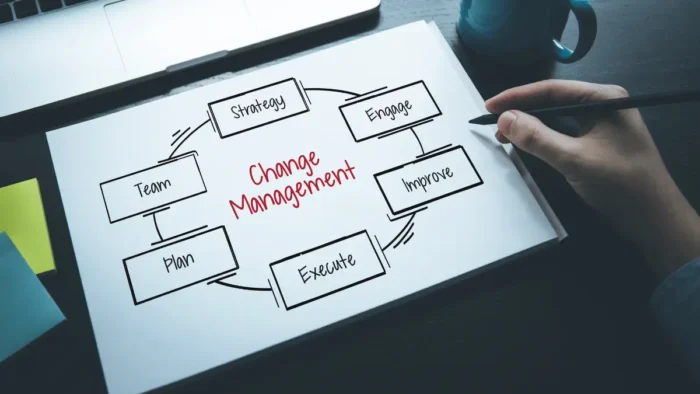Organizational changes are as old as the existence of organizations. And the existence of the organization is there as the existence of humans. If we look back into history when the people start to organize in different ways to build towns, pyramids, in wars, there was a strong need for some type of organization.
The first official record about organizational change was found in the Old Testament (ex. 18) and was related to the escape of Moses with thousands of Israels as his followers from Egyptian Pharaoh. Moses at that time has a problem with something that we call today as social networks. At that time, there was no Internet, Facebook, and Twitter to communicate with many people. Each of his thousand followers has direct access to him. They cannot solve the problems of all followers. His father-in-low propose him to make reorganization and to carry out something that we now called hierarchical pyramidal structure. Than managers from higher levels will come to him only with problems that they cannot solve.
We can see that organizational changes are not something new.
What is the scientific development of organizational changes?
Briefly, I will cover some predecessors of something that we call today as organizational change:
1. Scientific Management
Some first scientific exploration of organizational changes was made by Frederick Taylor in the late 1800s and early 1900s. He describes these experiments in his famous book titled “Scientific Management”. Taylor, today present father of the subject that we call today as industrial engineering. The initiatives that he explores today we call re-engineering and business process re-engineering. Both of them have been evolved from Taylor and his work.
2. Hawthorne Studies
Taylor’s work was based on the combination of economics and engineering disciplines. Hawthorne studies that were conducted from 1923 to 1933 were more related to psychology and sociology. For the first time in the organizational changes was included social factors as something that can impact the productivity of the companies.
3. Organizational Development
We cannot talk about organizational changes without organizational development. Organizational development that comes from the 1950s and 1960s as some type of organizational change is in the group of planned changes. But, the changes focused on human factors in an organization.
4. KAIZEN
We cannot talk about the evolution of the organizational changes without including the Kaizen philosophy (the 1950s). This philosophy brings changes in the perception of management and changes in the organizations. This philosophy comes from Japan and implements small changes in all aspects of the company continually.
5. TQM – Total Quality Management.
TQM is a process of organizational change with one important goal of the organization: to improve quality in all organizational processes. For the first time when we think about quality we don’t think only about the quality of products and services. We expand our thinking about the quality as a quality of all business processes.
6. Managerial Grid
As one of the contributors to the development of organizational change theory is the managerial grid. This tool was developed by Robert Blake and Jane Mouton in 1964. The managerial grid identifies five different leadership styles based on the concern for people and the concern for productions.
7. Lean Management
Lean management comes from “Toyota Motor Corp” between the 1960s and 1970s and because of that, it is also known as Toyota Production System. The concept of lean management implements simple changes in the inventory system, business values, business costs, and so on. The idea is to achieve overall business improvements.
8. BPR – Business Process re-engineering
Re-engineering is the concept of the organizational change that implements big radical change that will change the full look and feel of the businesses. The concept and method were developed from the Michael Hammer and James Champy in their book titled “Re-engineering the Corporation – A Manifesto for Business Revolution”.
9. Fractal Philosophy
Fractal Philosophy is the answer of the European companies to the non-European management philosophies. The concept is based on the theory of fractal geometry and uses words as a self-similarity, self-organizing, self-optimizing and orientation to the objects.



